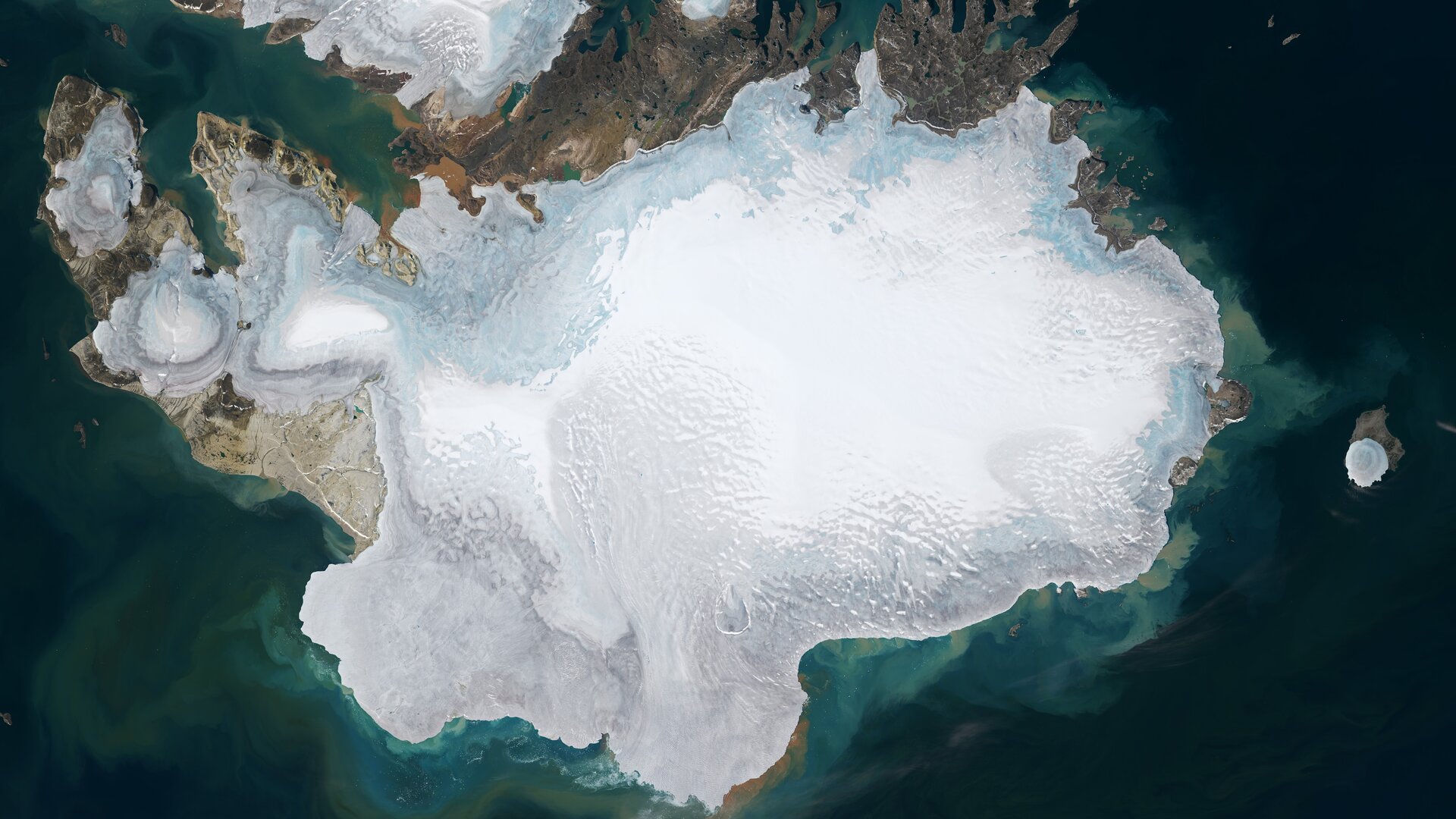Austfonna
Melting of Arctic ice caps and glaciers currently makes a significant contribution to sea level rise, which is expected to be sustained throughout the 21st century. Whilst the impact of warmer atmospheric temperatures on ice ablation and mass loss is relatively well constrained, the future dynamic response of marine-terminating ice bodies to changes in ocean and atmosphericforcing remains more uncertain. This is due to the complex and poorly constrained interactions between surface and ocean-driven melt, sea ice buttressing, hydrology, glacier dynamics and calving.

Key processes and drivers: Stability of Auftonna is poorly constrained and possibly linked to atmospheric extremes, via enhanced surface ablation, or changes in seasonal sea ice dynamics.
Case study objectives
- To build a multivariate EO-based reconstruction of an extreme Arctic ice cap destabilisation event. The resulting dataset will span terrestrial and oceanic domains; it will leverage and further develop multiple state-of-the-art EO capabilities; and it will provide a near continuous record-spanning at approximately the past decade.
- To perform scientific analysis of the resulting dataset to better understand the evolution and dynamics of this extreme destabilisation event, and the potential role that climate forcing may have played in its initiation.
- To establish a blueprint for an integrated EO monitoring framework for extreme Arctic ice cap destabilisation events, that could be extended to other ice caps and run operationally in the future.